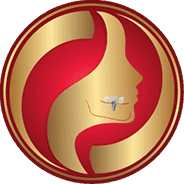How to Unlock a Locked Jaw: Surgical Solutions for TMJ Disorders

The temporomandibular joint is responsible for opening and closing the mouth and other functions with the jawline. When the jaw becomes locked, it’s a clear example of when TMD, or temporomandibular joint disorder, becomes apparent. Because the joint plays a pivotal role in controlling jaw movements like chewing and speaking. When stress or misalignment occurs, it can lead to jaw movement restrictions that compromise your jawline. Surgery may be needed in these cases, and here at University Oral Surgery Center, we’re here to describe what happens when a jaw locks and how it can be treated.
What Causes The Jaw To Lock?
A locked jaw, or trismus, occurs when there are spasms in the jaw muscles. These spasms cause the jaw to lock in a particular position, rendering it immobile and limiting its range of motion. It’s often uncomfortable for many people and can lead to various complications.
Jaw Locking in an Open Position
Experiencing a locked jaw in an open position can be upsetting, but it’s essential to recognize that you can take steps to manage your TMD and regain jaw function. Some of the steps you can take to restore your TMJ function include:
- Heat Packs For Release: Apply heat to the jaw area using a heat pack to relax the muscles surrounding the jaw to release the lock. Let the heat penetrate for around 30 minutes before attempting to unlock the jaw, as moving it early could worsen the problem.
- Side-To-Side Jaw Movements: After applying the heat, attempt to move the jaw with side-to-side movements gently. This movement can allow the muscles time to relax and aid the joints.
- Wiggle The Jaw With Hands: If the initial movement doesn’t provide results, try delicately moving the jaw with your hands to guide the motion.
When the jaw is locked in a closed position, it can be equally alarming. Jaw lock in a closed position often requires surgical intervention due to the significant discomfort it causes from the joint displacement. Surgical approaches such as arthroscopy or arthroplasty can be used to remove certain tissues or repair the joint.
Among these options, medication management can alleviate pain and inflammation, along with dental splints and physical therapy to help heal the joint and prevent the onset of a locked jaw. In these cases, custom-fitted mouthguards can be used as a preventative measure to minimize TMD damage caused by teeth grinding during sleep.
Visit University Oral Surgery Center For Locked Jaw Treatment
To discuss TMJ issues and seek surgical solutions, seek out our team at The University Oral Surgery Center. Under the care of our team, Dr. Ramin Shabtaie can provide care for patients seeking oral surgery solutions for cases such as locked jaw. For more information about our services, visit our location in Los Angeles, CA, and call us today at (310) 208-3471.
